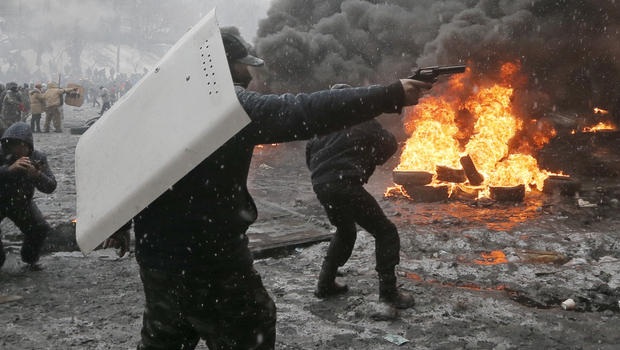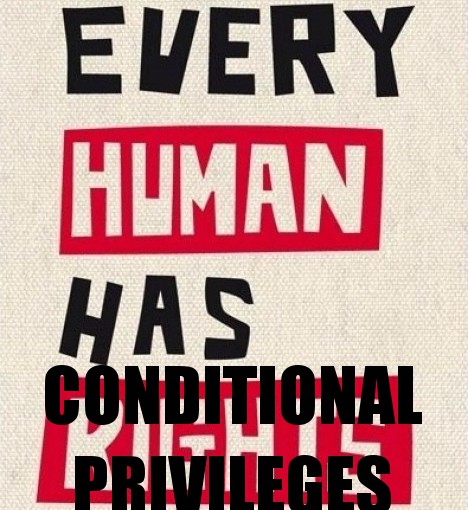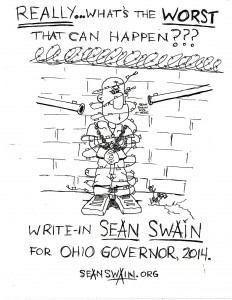 Pacifists Suck: How Arresting Revolution Maintains a Violent World
Pacifists Suck: How Arresting Revolution Maintains a Violent World
by Sean Swain
When a guy kicked in my door in 1991, I panicked and stabbed him to death. I didn’t own a gun. I didn’t believe in guns. I always ascribed to the wisdom that if somebody wanted to come to my home and shoot me, he would have to bring his own gun. So, in the years that followed, perhaps in part motivated by a need to make sense out of this tragedy, I encountered Gandhi. I read everything I could find and became a veritable Gandhi expert, even consuming everything by and about his students–Martin Luther King, Cesar Chavez, Gene Sharp (who wrote the exhaustive Politics of Nonviolent Action), and other fellow travelers like Archbishop Oscar Romero in El Salvador.
I became convinced that only nonviolent direct action–and exclusively-nonviolent direct action–held the solution for changing the world in any constructive way. As a member of CURE-Ohio’s prisoner advisory board, I successfully advocated for that organization to develop a policy for supporting prisoner nonviolent direct action. In 2002, I was recognized by no less than Rosa Parks herself for my public advocacy of nonviolent action, and the co-chair of the Southern Poverty Law Center’s National Campaign for Tolerance added my name to the Wall of Tolerance.
I share all of that to demonstrate that I am fully versed in the theory and practice of nonviolent direct action and that I used to be among those who insisted on exclusive nonviolence as the only solution. But I am no longer under the influence of that powerful delusion and I recognize, reasonably and practically, that political violence is a necessary feature for any successful effort at social transformation.
Exclusive nonviolence doesn’t cut it. It never did, it never will. In fact, those who insist on exclusive nonviolence and thereby hold all social movements hostage, demanding that all tactics employed by all participants meet the nonviolence litmus, are the biggest impediment to social transformation that currently exists. “Pacifists,” the idealist followers of Gandhi and MLK, are the most culpable accomplices to the continuing violence of our current status quo.
Principled pacifists, threatening withdrawal from social movements if violent tactics are considered, doom every social movement to which they are a part. They limit resistance to only those tactics that will inevitably fail. This proves true in the most glaring recent example of the Occupy movement, when police employed brutal and violent repression to push resisters out of the public space. The resistance ultimately dissolved in the face of State terror because pacifists’ limitations prevented Occupy from preparing effectively to meet violence with violence, precluded any plan to deploy violent offensives that would diminish the State’s capacity to confront Occupy with such overwhelming force, and ultimately foreclosed upon even the consideration of tactics that may have altered history.
Reality: Cops are violent.
Reality: Cops are going to employ violence to impose “order.”
Reality: If those who truly desire to challenge the-world-as-it-is want to be successful, they will have to develop strategies for meeting, countering, and overcoming State violence.
Reality: Violent revolutionary action is the solution.
Of course, principled pacifists are unwilling to participate in any social movement that contemplates violence and/or property damage, not even in a nonviolent or noncombatant role, thereby diminishing the potential numbers of the resistance and dooming it stillborn before it ever emerges.
But what is it, exactly, that principled pacifists are opposing? Is their opposition reasonable? Just how “violent” is violent revolution, and does it result in more violence than a continuation of the existing order of things?
Let’s take an analytical look at violent revolution, the solution that principled pacifists oppose and ultimately prevent: We can get an idea of what happens during a revolution by considering the data from previous revolutions. We know, for instance, that in the English, American, French, and Russian revolutions, only a maximum of 5% of those country’s populations–at peak participation–were involved in the resistance. So that means that 95% of any given population does not participate in a revolution.
This is important for us to consider as we weigh the violence that principled pacifists oppose, and the violence that principled pacifists ultimately choose to perpetuate–the State violence of the current order. The violent revolution that pacifists prevent would foreseeably involve 5% of the population at most. That means pacifists prevent 5% of the population from successfully liberating 100% of the population through recourse to bullets and bombs.
This ratio is also borne out by more recent struggles, including the Cuban revolution. In Cuba, rebels never numbered more than 5,000 in a population of roughly 11 million people. This puts max participation at 4.5% against a regime materially-supported by the United States.
In that armed struggle, the rebels killed something like 300 of the regime’s forces.
Using those numbers, an armed struggle in the U.S. that would successfully topple the existing order would involve 13.5 million people, a mere fraction of the number of the currently unemployed. So, by all accounts, principled pacifists aren’t opposing a wild orgy of violence that engulfs 300 million people and plunges the U.S. unto absolute madness, they oppose an armed struggle that, at most, would involve 13.5 million rebels.
But, that’s still not a fair presentation. While 13.5 million would be involved in the rebellion, not all would be involved in direct armed struggle as combatants. We have to consider that many of those people would be medics and cooks and logistical support. You’ve also got large numbers of rebels who would engage exclusively in nonviolent forms of resistance like hacking, intelligence gathering, promotion, and recruitment, not to mention those who specialize in sabotage exclusively against property.
It is important to remember that just because a rebellion incorporates the strategies of violence, not all rebels necessarily participate in the violent components of rebellion. Normally, just a fraction of any given force ever engages in actual combat, fighting, shooting, and dying. So that we cannot be accused of under-estimates, let’s say half of the rebels would be involved in direct violence, although this ratio is likely very high.
In an armed struggle in the U.S., that would put the number of rebels engaged in actual direct fighting at less than 7 million.
I read somewhere that we have 200 million guns in the U.S. We could arm every combatant of a successful revolution by distributing just 3.5% of the guns we own. In so doing, we could end the current order and all the suffering and death it causes globally, year after year. It would take 7 million people, at peak participation, willing to pull a trigger to bring about a future we deserve.
With 7 million armed rebels in a revolutionary engagement involving a maximum of 13.5 million, we could reasonably expect a number of deaths as high as 810,000. And that’s if the government forces continue fighting until the rebels can reach the doorstep of those calling the shots.
That’s if the U.S. military is willing to side with the government, against the people.
More people than that will be killed by drunk drivers.
More people than that will kill themselves, because the current order relegates them to lives that are intolerable.
Consider: If principled pacifists willingly played nonviolent roles in a violent revolution, 300 million people would be liberated with less than 1 million casualties and the foreseeable end result would be a net gain rather than a loss when we consider all of the lives that this current system will inevitably chew up if it isn’t taken down. And that isn’t even factoring in people all over the world who suffer and die as a result of U.S. actions.
Consider: If, prior to the U.S. invasion of Iraq, principled pacifists participated nonviolently in a violent revolution, millions of lives would have been saved at a cost of fewer than 1 million. That means if we act now, and pacifists allow the revolution to take its course, we can save millions of lives in preventing the next U.S. invasion and bombing of some defenseless country before it even happens.
To be a principled pacifist is to foreclose upon a revolution that would save lives. That means, in the final analysis, pacifists are against the preservation of life. They are so enraptured with their delusional, fast construct and their narrow, unrealistic definition of violence, that their “principled” inaction obstructs what would transform the world and preserve countless lives long into the future. Their principles matter more than we do.
Consider the next drone strike.
Consider the unarmed Black men killed by police.
Principled pacifists are the unwitting shovel that the ruling elite uses to dig its mass graves. Their complicity in crimes against humanity is inexcusable. Let’s hope that, for the rest of us who do not share their Kumbayah delusions, they stop obstructing the real solution before it’s too late.
Recommended reading:
Anatomy of Revolution, by Crane Brinton War of the Flea, by Robert Taber Politics of Nonviolent Action, by Gene Sharp The Logic of Political Violence, by Craig Rosebraugh
 From the EF! Newswire.
From the EF! Newswire.

 This originally aired on
This originally aired on We sent Sean comments from his
We sent Sean comments from his  Dear Ukrainian People,
Dear Ukrainian People, In
In  Originally published at
Originally published at 
 Sean Swain
Sean Swain Media Release
Media Release Pacifists Suck: How Arresting Revolution Maintains a Violent World
Pacifists Suck: How Arresting Revolution Maintains a Violent World